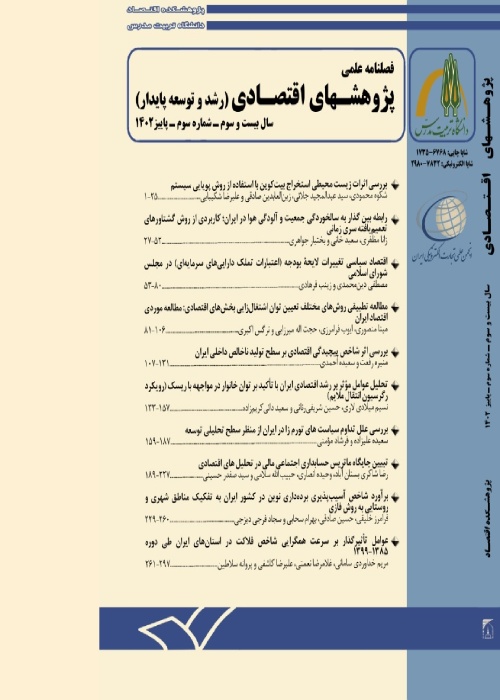Exchange Rate Changes and their Impact on Some Macroeconomic Variables for the Iranian Economy under Sanctions
All economists believe that the most important goals of economic policy are achieving full employment, price stabilization and economic growth in the society. On the other hand, rendering the formation of the exchange rate to the market mechanism and increasing it disproportionately with the purchasing power of the rial has a negative effect on production and employment and causes an increase in prices and a decrease in the value of the national currency, which again provides the ground for the next increase in the exchange rate. For this purpose, in most societies, especially in developing countries, currency policies are used to achieve the mentioned goals. Changes in exchange rates affect economic performance in different ways. In this study, we will examine the effect of exchange rate changes on the performance of important macroeconomic variables, namely production, employment and the general level of prices. Taking into account the effects of sanctions against the country, the model considers the mechanism and channel of its effect on the foreign sector of the economy, while creating an index with monthly frequency for it, and its effect has been calculated directly on all macroeconomic variables of the foreign sector of the model.
During the last two decades, tremendous developments have taken place in the field of modeling time series variables and predicting the future values of economic variables, one of which is to specify and estimate equations where the variables involved in that equation, unlike usual, have different frequencies. Mixed-data sampling (MIDAS) has been specified and estimated with the help of time series data over the period 1959-2017. Mixed data sampling regressions are now commonly used to deal with time series data sampled at different frequencies.A MIDAS regression is a direct forecasting tool which can relate future low-frequency data with current and lagged high-frequency indicators, and yield different forecasting models for each forecast horizon. It can flexibly deal with data sampled at different frequencies and provide a direct forecast of the low-frequency variable. It incorporates each individual high-frequency data in the regression, which solves the problems of losing potentially useful information and including mis-specification.
The presented macro econometric model is developed in the framework of the aggregate supply-aggregate demand model. Total demand is made up of household consumption expenditures, investment expenditures separately from private and government, government current expenditures and net exports. The production function forms the supply side of the economy according to the utilization rate of the production capacity. The modeling of the two parts of supply and demand has been done in a completely consistent manner, so that after the estimation of the model, it is possible to solve and simulate the model to examine the effect of economic policies and predict macro variables. According to the results of the model, in relation to the policy of devaluation of the national currency in the Iranian economy, the increase in the exchange rate in the face of sanctions, in addition to reducing production, paves the way for employment and inflationary pressures. Indeed, The incorrect approach of increasing the exchange rate has not only limited economic growth due to the increase in production costs, but has also caused the impoverishment of the oppressed and the unfair distribution of income in the society.
Because the model under study has better explanatory power than other time series models due to more complete information, it is expected that it will be possible to evaluate exchange rate policies more accurately. The model has sections on production, consumption and investment expenditures, foreign trade, government, employment, money and prices. In addition, according to the very good results obtained from the dynamic simulation of the model, the model can be a good representative of the mechanism of the Iranian economy. Finally, the results of the evaluation of foreign exchange policies in the context of sanctions can be reviewed.
- حق عضویت دریافتی صرف حمایت از نشریات عضو و نگهداری، تکمیل و توسعه مگیران میشود.
- پرداخت حق اشتراک و دانلود مقالات اجازه بازنشر آن در سایر رسانههای چاپی و دیجیتال را به کاربر نمیدهد.



